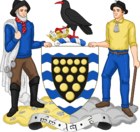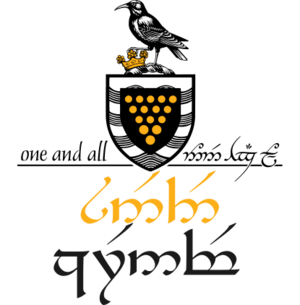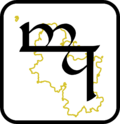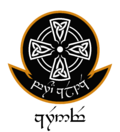Senedh Kernev
Senedh Kernev | |
|---|---|
| Type | |
| Type | Unicameral |
| History | |
| Founded | 15th century |
| Leadership | |
Tamsyn Glowbrenn, Independent | |
| Structure | |
| Seats | 30 |
 | |
Political groups | HH Government
HH Opposition
Presiding officer
|
 |
|---|
| This article is part of a series on the politics and government of Kernev |
The Senedh Kernev, known colloquially as the Senedh, is the unicameral legislature of Kernev. A democratically elected body, it legislates for Kernev, and scrutinises the Kernevic Government. It is a bilingual institution, with both Kernevic and Jackian being the official languages of its business.
The Senedh is an elected body consisting of 30 members known as Members of the Senedh (Kernevic: Esel an Senedh; abbreviated as "ES"). ES are elected to represent constituencies by the first-past-the-post system and hold their seats until the Senedh is dissolved, no later than five years after the previous election was held. The Senedh is presided over by the Lewydh (Kernevic Jackian: Presiding Officer), currently Tamsin Glowbrenn. It is traditional for Lewydhow to resign their party whip upon election as Lewydh.
Legally, the powers of the Senedh Kernev are all derived from the Prince of Kernev, which are subject to no legislative limits, however, there are a great number of conventions which delineate reserved areas of power which the prince retains, areas of authority for the Government of Kernev and areas of authority held by the Senedh. Uniquely among constitutional monarchies, the princes of Kernev frequently lead the executive branch of government, typically in periods where no candidate for Prime Minister attains the necessary 16 votes to form a government and also in periods of political crisis. In these cases the prince leads a caretaker cabinet, which traditionally adheres to a convention of minimal political intervention, maintaining the policy of the previous government whilst responding to any crises.
Contents
History
The first recorded Senedh took place between 1428 and 1460, during the reign of Cadan Arthyen. This first Senedh, known as the Stannary Parliament, was composed of owners of tin and copper mines across Kernev, in addition to nobles, and guild masters. The composition and function of the Senedh has changed substantially since the 15th century. In 1673, the passage of the Act of Revolution was passed into law by the monarch, this act established yearly Senedhs and granted parliament the right of assent on any changes of taxation. This was the first time the Senedh was granted supremacy over the monarch on any area and marks the beginning of the Senedh as a legislative body.
The 1674 Senedh passed legislation to delineate six regions for impressment, and decreed that no more than three such regions would be subject to impressment in any one year to ensure sufficient seafarers to exploit fishery stocks around Kernev, whilst the Senedh had no de jure authority on this matter, Prince Locryn conceded the issue to the Senedh without conflict.
In 1838 the Aberfal Accords, an agreement between political leaders from the Jackian-speaking minority and the monarchy, allowed representation for non-Kernevic speakers for the first time, marking the beginning of the Senedh Kernev as a bilingual institution. Simultaneously, directly elected seats were introduced, replacing the ad hoc formation prior to this agreement, these elections were held whenever the prince dissolved the Senedh, with no formal limit at this point.
The franchise was expanded greatly in 1889, according to a wealth qualification that effectively allowed all middle and upper class men over 18 to vote. In 1910, this requirement was extended to women. In 1919, the Representation of the People Act was passed expanding the franchise to all men and women over the age of 18.
Role
Relationship with the government
The legislative and executive branches of the Kernevic government are merged, as the executive is drawn from the legislature. Historically, the members of the executive were chosen by the Prince, though since 1919 this function has been purely in name only. De facto, the members of the executive are chosen by the Prime Minister, who is in turn chosen by the Senedh at large. Due to the small number of seats in the Senedh Kernev, it is common for every member of the ruling party to hold a ministerial portfolio.
The Senedh may be dissolved by the government at any time, resulting in a general election. Alternatively, any ES may raise a motion of no confidence. If a majority of ES vote in favour of such a motion, the prince is compelled to dismiss the executive. Over a period of seven days a new government may be formed, if no candidate for Prime Minister secures a majority of the Senedh in this period the Senedh is dissolved and new elections are held.
Legislative functions
The Senedh is the sole legislative body in Kernev and hence has both introductory and revising roles in legislating. Generally, legislation is put forward by the minister of the relevant department. The only mandatory act is a scheduling act which must be enacted monthly to determine the legislative schedule for the following month. The opposition are allowed to schedule on fifteen days per year, divided proportionally to the size of each party's grouping in the Senedh.
Electoral system

Kernev uses a system of first-past-the-post (FPTP) with single member constituencies. The Senedh Kernev has thirty members, elected for up to five years per term. These constituencies are redrawn in boundary reviews once every ten years, with constituencies to be drawn such that each constituency is within a 10% margin of the quota (1/30 of the total electorate). In each constituency, the candidate who receives the highest number of votes, which may be fewer than half of the votes, is elected as the ES for that constituency. This system has been criticised by opposition parties in Kernev as unfair and disproportionate, due to the distortive effects of FPTP on the proportion of seats each party gains in the Senedh comparative to the vote-share of each party.
As a matter of electoral convention, the seat of the Lewydh is not contested by any major parties, as the speaker has no legislative record by which they could be fairly judged. This is not legally enforced, however, and since 2010, every election for the constituency of the Lewydh has been contested by minor parties.
Composition
As of the 2020 general election, the Kernev Senedh had thirty constituencies, the hundred of Lysnowydh had five constituencies; the hundred of Pow Ereder had four constituencies; the hundreds of Manahek, Keryer and Pedera each had three constituencies; Ryslegh, Stradneth, Bronel, Pennwydh, Trigor and Rostorrmel (combined with Fawy) each had two constituencies. The current Lewydh represents Tewynblustri & Fawy meaning the three major parties do not contest this seat.
- Current composition
| Party | Seats | |
|---|---|---|
| Mebyon Kernev | 19 | |
| Bora Keltek | 6 | |
| Unyans Kernevek | 4 | |
| Independent | 1 | |


